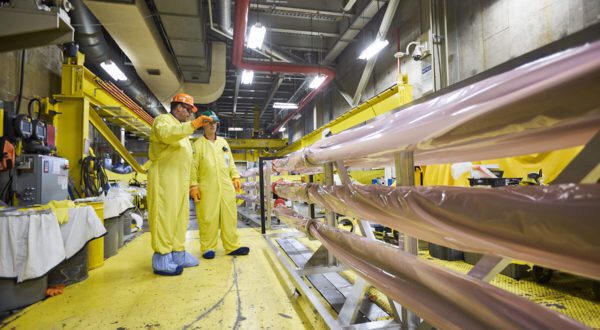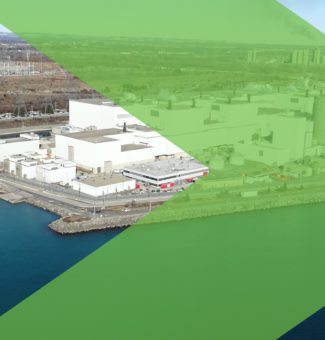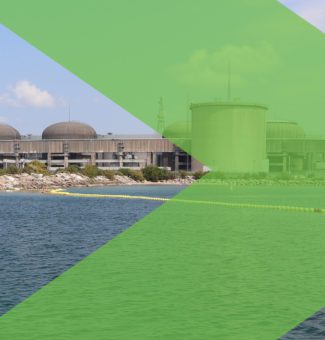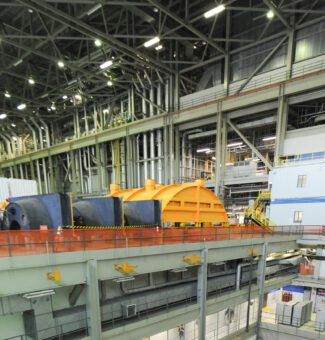Final calandria tube installed on Darlington's Unit 2
OPG’s Darlington Refurbishment hit another milestone as calandria tube installation has been completed at Darlington’s Unit 2. This now sets the stage for bellows replacement followed by fuel channel installation.
Work to replace two bellows assemblies began Oct. 29, with a completion date of Nov. 1, at which point fuel channel replacement can begin. Bellows assemblies, which are made of nickel-chromium alloy strips configured with 14 convolutions, provide flexibility between the fuel channel and the reactor end shields to reduce movement due to thermal changes as well as seal the space between the calandria tube and pressure tube, which houses the nuclear fuel bundles.

The calandria tube installation involved teams of workers, made up of boilermakers and millwrights, working on the insertion side with an additional group on the receiving side. This was the first series where much of the work was completed manually on the face of the reactor, with procedural direction supplied by the Re-tube Control Centre. The installation process involved installing the calandria tube into a lattice site, verifying correct positioning on both reactor faces, then rolling the calandria tube, finishing with a leak test.
“This was a crucial work evolution, leaving us with a pipe-tight reactor on the moderator side, which now allows us to remove the moderator dry systems, opening up a lot of important new work, as we march forward on the road toward filling the moderator in January,” said Mike Allen, OPG Senior Vice President, Nuclear Refurbishment.
Getting to the point where workers were no longer required to wear plastic suits was one key to success of the series, says CanAtom superintendent Brian Flynn.
To accomplish this, the vault underwent a deep clean by CanAtom labourers, with support from OPG. When post-clean surveys indicated it was safe to do so, workers were able to proceed without plastic suits, which allowed for better productivity and significantly less potential radiation exposure.
“There was a real concerted effort by everyone to get this done,” said Flynn. “It worked because we were open about it, and willing to answer questions and concerns workers raised. We enlisted the help of health physicists and others – those who are most knowledgeable about radiation protection.”
As was the case with calandria tube installation, fuel channel installation is slated for 103 days.
Subscribe and stay informed
Sign up to receive the latest news, project updates, and event information from OPG.


